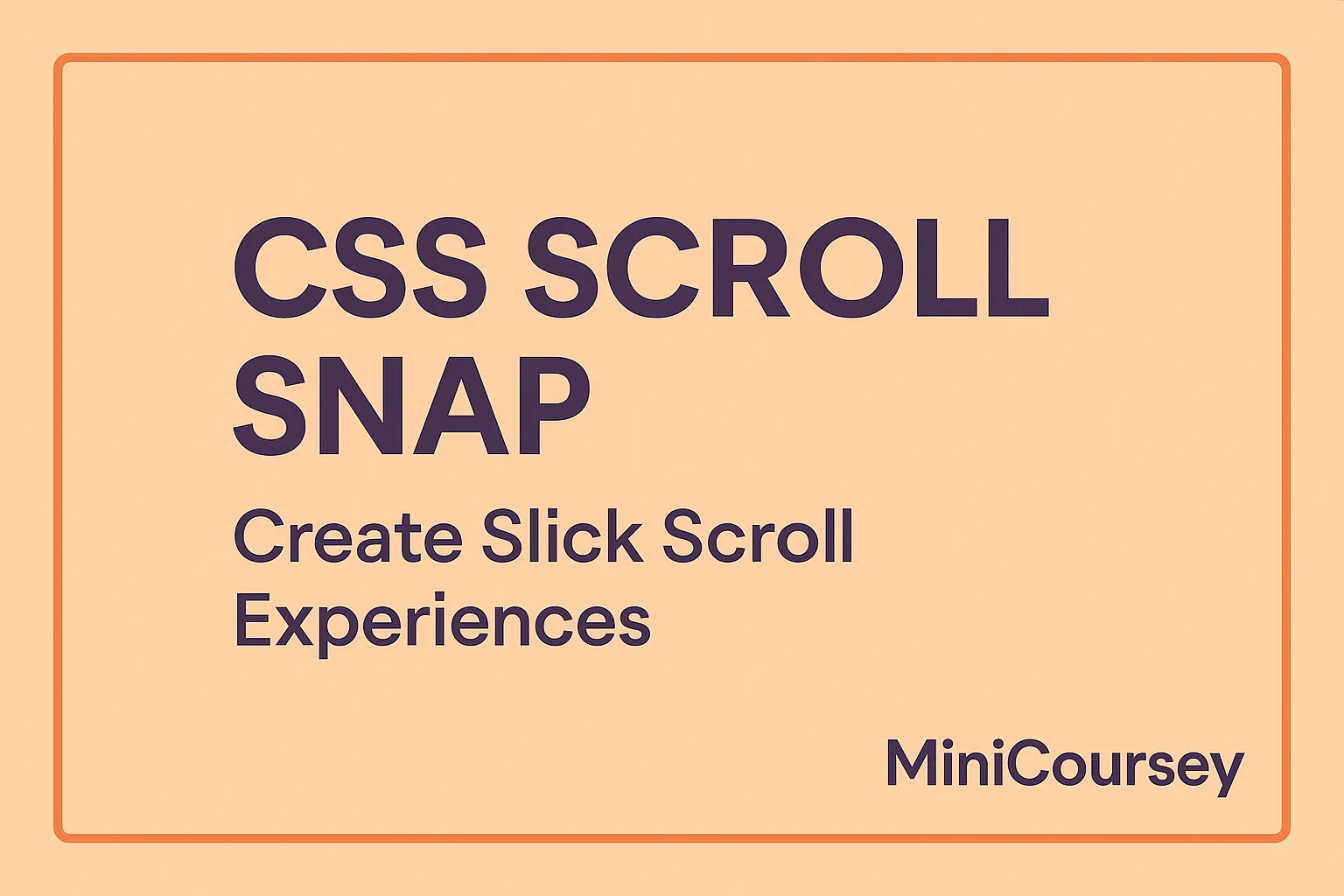Want to build carousels, sliders, or scroll sections that snap neatly into place? CSS Scroll Snap makes it easy! With just a few lines of CSS, you can guide how your scrollable containers behave when scrolling stops — creating slick, precise UX with no JavaScript needed. In this MiniCoursey quick guide, you’ll learn what CSS Scroll Snap is, how to set it up, and best practices for modern, smooth scrolling experiences.
What is CSS Scroll Snap?
Scroll Snap lets you control how a scroll container snaps to child elements after the user scrolls or swipes. It’s perfect for horizontal sliders, full-page sections, or image galleries.
Basic Syntax
Apply scroll-snap-type on the container and scroll-snap-align on the child elements.
.slider {
scroll-snap-type: x mandatory;
overflow-x: scroll;
display: flex;
}
.slide {
scroll-snap-align: start;
}
In this example, the slider scrolls horizontally and each slide snaps to the start position.
Why Use Scroll Snap?
- Build carousels and sliders with no JS libraries.
- Enhance user control and predictability.
- Works great for touch and mouse scrolling.
💡 Pro Tip: Combine with
scroll-behavior: smooth;for buttery-smooth snap transitions.
⚠️ Common Mistake: Always test on touch devices — small adjustments to snap positions can hugely affect UX!
FAQ
Q: Can I use it vertically?
A: Absolutely! Use scroll-snap-type: y mandatory; for vertical snapping.
Q: Is Scroll Snap well supported?
A: Yes — it’s well supported in all modern browsers. Just test thoroughly for edge cases!
Related Link
👉 Check out previous: CSS Overscroll Behavior — Control Scroll Bounce
Where to Learn More
Check MDN’s Scroll Snap docs for advanced usage and more pattern ideas.
Conclusion
Congrats — you now know how to create slick, modern scroll snapping experiences with pure CSS!
✨ Bookmark MiniCoursey for more quick & free mini courses!

